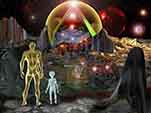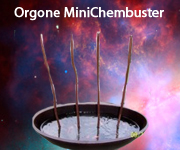Colonel James S. Ketchum dreamed of war without killing. He joined the Army in 1956 and left it in 1976, and in that time he did not fight in Vietnam; he did not invade the Bay of Pigs; he did not guard Western Europe with tanks, or help build nuclear launch sites beneath the Arctic ice. Instead, he became the military’s leading expert in a secret Cold War experiment: to fight enemies with clouds of psycho-chemicals that temporarily incapacitate the mind—causing, in the words of one ranking officer, a “selective malfunctioning of the human machine.” For nearly a decade, Ketchum, a psychiatrist, went about his work in the belief that chemicals are more humane instruments of warfare than bullets and shrapnel—or, at least, he told himself such things. To achieve his dream, he worked tirelessly at a secluded Army research facility, testing chemical weapons on hundreds of healthy soldiers, and thinking all along that he was doing good....
Today, Ketchum is eighty-one years old, and the facility where he worked, Edgewood Arsenal, is a crumbling assemblage of buildings attached to a military proving ground on the Chesapeake Bay. The arsenal’s records are boxed and dusting over in the National Archives. Military doctors who helped conduct the experiments have long since moved on, or passed away, and the soldiers who served as their test subjects—in all, nearly five thousand of them—are scattered throughout the country, if they are still alive. Within the Army, and in the world of medical research, the secret clinical trials are a faint memory. But for some of the surviving test subjects, and for the doctors who tested them, what happened at Edgewood remains deeply unresolved. Were the human experiments there a Dachau-like horror, or were they sound and necessary science? As veterans of the tests have come forward, their unanswered questions have slowly gathered into a kind of historical undertow, and Ketchum, more than anyone else, has been caught in its pull. In 2006, he self-published a memoir, “Chemical Warfare: Secrets Almost Forgotten,” which defended the research. Next year, a class-action lawsuit brought against the federal government by former test subjects will go to trial, and Ketchum is expected to be the star witness.
The lawsuit’s argument is in line with broader criticisms of Edgewood: that, whether out of military urgency or scientific dabbling, the Army recklessly endangered the lives of its soldiers—naďve men, mostly, who were deceived or pressured into submitting to the risky experiments. The drugs under review ranged from tear gas and LSD to highly lethal nerve agents, like VX, a substance developed at Edgewood and, later, sought by Saddam Hussein. Ketchum’s specialty was a family of molecules that block a key neurotransmitter, causing delirium. The drugs were known mainly by Army codes, with their true formulas classified. The soldiers were never told what they were given, or what the specific effects might be, and the Army made no effort to track how they did afterward. Edgewood’s most extreme critics raise the spectre of mass injury—a hidden American tragedy.
Ketchum, an unreconstructed advocate of chemical warfare, believes that people who fear gaseous weapons more than guns and mortars are irrational. He cites approvingly the Russian government’s decision, in 2002, to flood a theatre in Moscow with a potent incapacitating drug when Chechen guerrillas seized the building and took eight hundred theatregoers hostage. The gas debilitated the hostage takers, allowing special forces to sweep in and kill them. But many innocent people died, too. “It’s been looked at by some skeptics as a kind of tragedy,” Ketchum has said. “They say, ‘Look, a hundred and thirty people died.’ Well, I think that a hundred and thirty is better than eight hundred, and it’s also better, as a secondary consideration, not to have to blow up a beautiful theatre.”
https://exploringrealhistory.blogspot.com/2018/10/operation-delirium.html






































